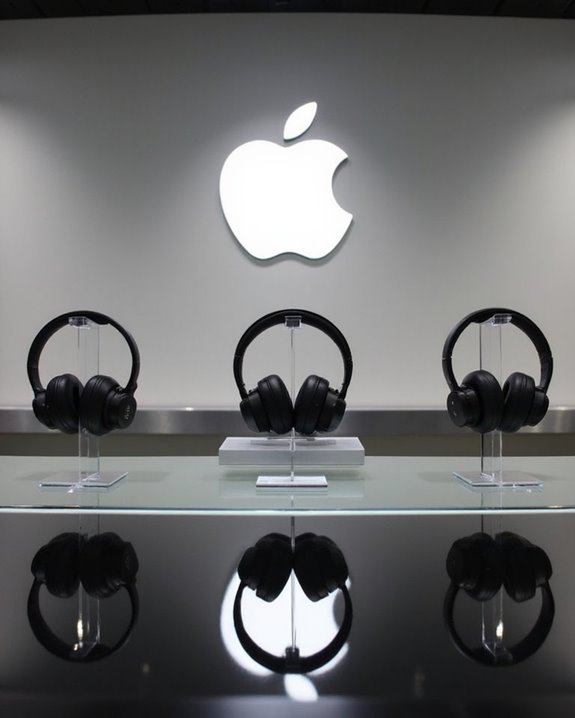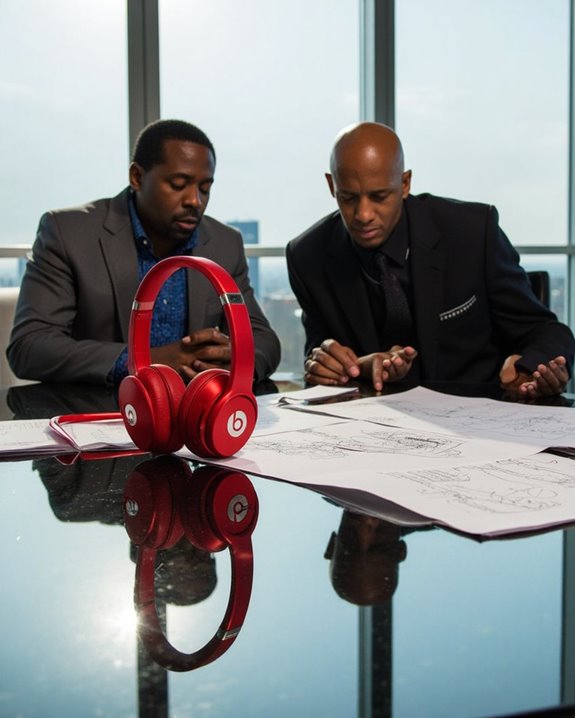Beats Electronics, creator of the popular Beats headphones line, is owned by Apple Inc. following a $3 billion acquisition completed in 2014. The company, originally founded in 2006 by music industry veterans Dr. Dre and Jimmy Iovine, was purchased for $2.6 billion in cash and $400 million in stock. Both founders joined Apple’s executive team post-acquisition while the brand maintained its distinctive identity. The acquisition story reveals Apple’s strategic plan beyond just acquiring headphone technology.
Key Takeaways
- Apple Inc. owns Beats headphones after acquiring the company in 2014 for $3 billion.
- Beats Electronics was originally founded in 2006 by Dr. Dre and Jimmy Iovine.
- The acquisition included both Beats Electronics (hardware) and Beats Music (streaming service).
- Beats continues to operate as Apple’s subsidiary while maintaining its distinctive brand identity.
- After the acquisition, Beats founders joined Apple’s executive team as part of the deal.
The Origins: Dr. Dre and Jimmy Iovine’s Sound Revolution
A musical vision transformed into a technological empire when Beats Electronics was established in 2006 by legendary hip-hop artist Dr. Dre and music industry veteran Jimmy Iovine. This Founding Partnership emerged from their shared concern about two critical issues plaguing the music industry: rampant piracy and deteriorating audio quality in digital music.
The duo pioneered Audio Innovation by consulting respected musicians like M.I.A. and Pharrell Williams during development. Their first product, Beats by Dr. Dre Studio headphones, launched on July 25, 2008, after partnering with Monster Cable to develop the technology.
Beats’ strategic approach focused on premium sound quality paired with celebrity endorsements, targeting young adults. This formula proved remarkably effective—by 2009, Beats generated $180 million in revenue and captured nearly one-third of the headphone market. The brand’s success is further driven by the integration of dynamic drivers that achieve maximum volume without compromising audio fidelity.
Apple’s $3 Billion Acquisition: The Landmark Deal
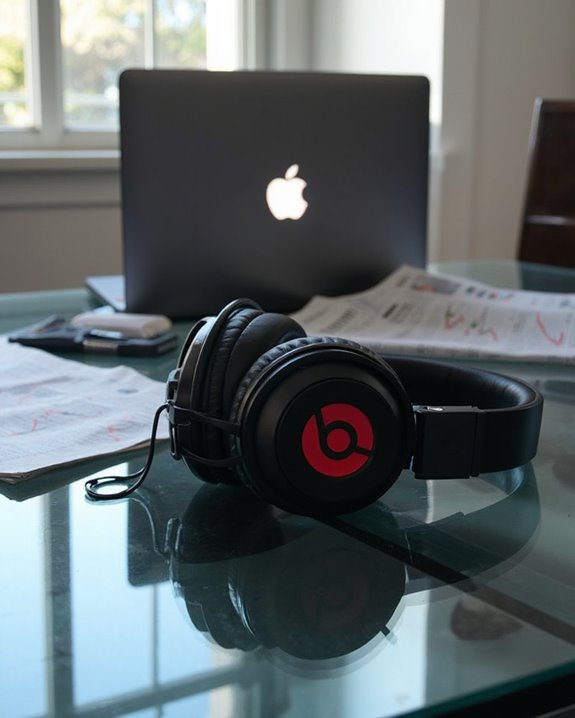
In May 2014, the tech world witnessed a historic transaction when Apple announced its agreement to acquire Beats Electronics and Beats Music for $3 billion—marking the largest acquisition in Apple’s corporate history. The Deal Structure included $2.6 billion in cash and $400 million in stock that would vest over time, bringing both the hardware and streaming components under Apple’s umbrella.
The acquisition faced standard Regulatory Hurdles but was expected to close in Apple’s fiscal fourth quarter of 2014. As part of the arrangement, Beats co-founders Jimmy Iovine and Dr. Dre joined Apple’s executive team, bringing their industry expertise and connections. The move strategically positioned Apple to strengthen its presence in premium audio hardware while simultaneously boosting its emerging music streaming capabilities against competitors.
Why Apple Wanted Beats: Strategic Motivations
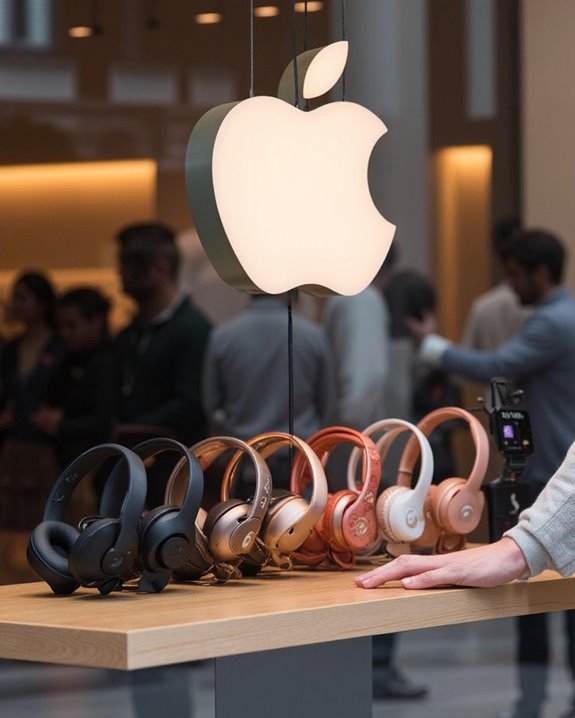
The $3 billion acquisition revealed much more than a simple hardware play for Apple, pointing to several strategic motivations behind the tech giant’s unprecedented move.
At the core was Market Diversification, as Apple gained Beats’ commanding 59% share of the high-end headphone market while expanding its product portfolio into premium audio equipment. The deal also secured Beats Music, a streaming service that Apple could integrate into its ecosystem.
Innovation Synergy drove the acquisition’s long-term value, combining Beats’ human-centered design expertise with Apple’s technological capabilities. Additionally, Apple gained access to influential industry talent, including Jimmy Iovine and Dr. Dre, whose connections facilitated exclusive partnerships with artists.
The strategic purchase also aimed to revitalize Apple’s brand image, tapping into Beats’ stylish appeal to younger demographics.
Financial Performance Before the Apple Purchase

Despite being a relatively young company, Beats Electronics demonstrated exceptional financial prowess before catching Apple’s attention, reporting an impressive $1.3 billion in revenue during its pre-acquisition period. The company’s robust Financial Metrics showcased a strong market position in the premium headphone segment, capturing significant market share despite fierce competition.
Revenue Trends indicated substantial growth trajectory, with Beats generating steady cash flow that highlighted its financial stability. This profitability made it an increasingly attractive acquisition target for larger tech companies. With approximately 700 employees, the company maintained operational efficiency while expanding its product portfolio beyond headphones to include speakers and a streaming service.
Beats’ financial performance was particularly notable considering the market saturation challenges and competition from established audio brands it faced during this period.
How Beats Operates Under Apple’s Ownership
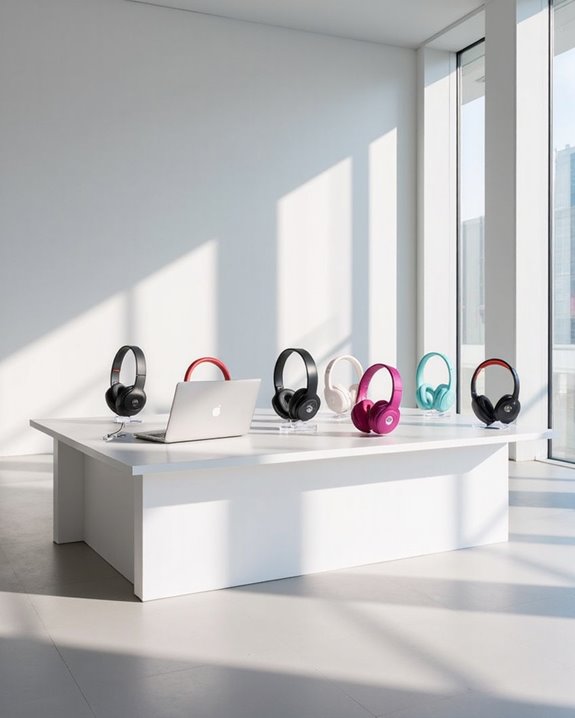
After Apple’s landmark $3 billion acquisition of Beats Electronics in 2014, the headphone company underwent significant operational restructuring while still maintaining its distinctive brand identity. The integration process preserved Beats as a separate brand while leveraging Apple’s extensive distribution network and technological infrastructure.
Beats products continue to be sold through Apple retail stores and third-party resellers, benefiting from Apple’s global reach. The company’s music streaming service was transformed, with Beats Music subscribers migrating to the newly created Apple Music platform.
Synergy effects between the companies emerged as Beats’ audio expertise complemented Apple’s technological capabilities. While operating under Apple’s corporate umbrella, Beats maintains its design aesthetic and market positioning, with founders Dr. Dre and Jimmy Iovine joining Apple’s music division to facilitate collaboration.
Current Status of the Beats Brand in 2025
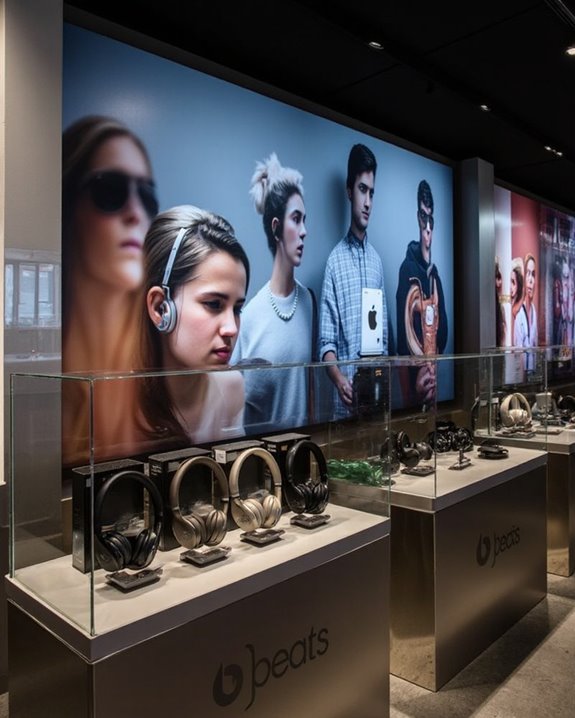
In 2025, Beats continues to thrive as Apple’s distinctive audio subsidiary, maintaining its unique brand identity while benefiting from shared technological innovations. The brand remains recognized for its signature Bass Signature, offering a punchier sound profile that distinguishes it from Apple’s AirPods line.
Beats maintains platform agnosticism, functioning seamlessly with both iOS and Android devices while providing extensive Color Options that appeal to style-conscious consumers. The current lineup features premium models like the Studio Pro Wireless and Studio Buds, equipped with spatial audio and active noise cancellation.
The brand’s evolution continues with the anticipated PowerBeats Pro 2, awaiting FCC approval for 2025 release. Beats products now balance their bass-heavy heritage with refined audio experiences, appealing to both athletes and audiophiles through durable designs and enhanced sound quality. Notably, the Beats Studio Pro offers Spatial Audio and lossless support, alongside Bluetooth 5.3 connectivity, enhancing the premium listening experience.
Frequently Asked Questions
Were There Other Major Bidders Before Apple Acquired Beats?
Among $3 billion tech acquisitions, this deal stood out for its lack of public bidder competition. No other major acquisition rivals were publicly disclosed before Apple purchased Beats Electronics, though the company’s strong market position attracted strategic interest.
How Has Beats’ Market Share Changed Since the Apple Acquisition?
Since Apple’s acquisition, Beats’ market share has grown substantially. Market trends indicate enhanced distribution and integration with Apple’s ecosystem, while consumer shifts toward premium audio brands have further strengthened its competitive position.
What Design Changes Occurred in Beats Products After Apple’s Takeover?
Post-acquisition, Beats shifted toward wireless products with aesthetic updates like sleeker profiles. Design trends included Apple H1 chip integration, improved comfort, enhanced connectivity features, and maintaining the brand’s signature style while improving audio quality.
Do Dr. Dre and Jimmy Iovine Still Influence Beats’ Product Development?
Coincidentally, Dre’s influence and Iovine’s role in Beats’ product development have diminished since Apple’s acquisition. While they joined Apple in 2014, there’s no public evidence they maintain significant input in current product design decisions.
Has Apple Integrated Beats’ Audio Technology Into Other Apple Products?
Apple has integrated Beats’ audio expertise into its ecosystem through Tech Integration initiatives. The Audio Fusion approach has enhanced sound quality across Apple products, incorporating Beats’ technology while maintaining distinct brand identities.

